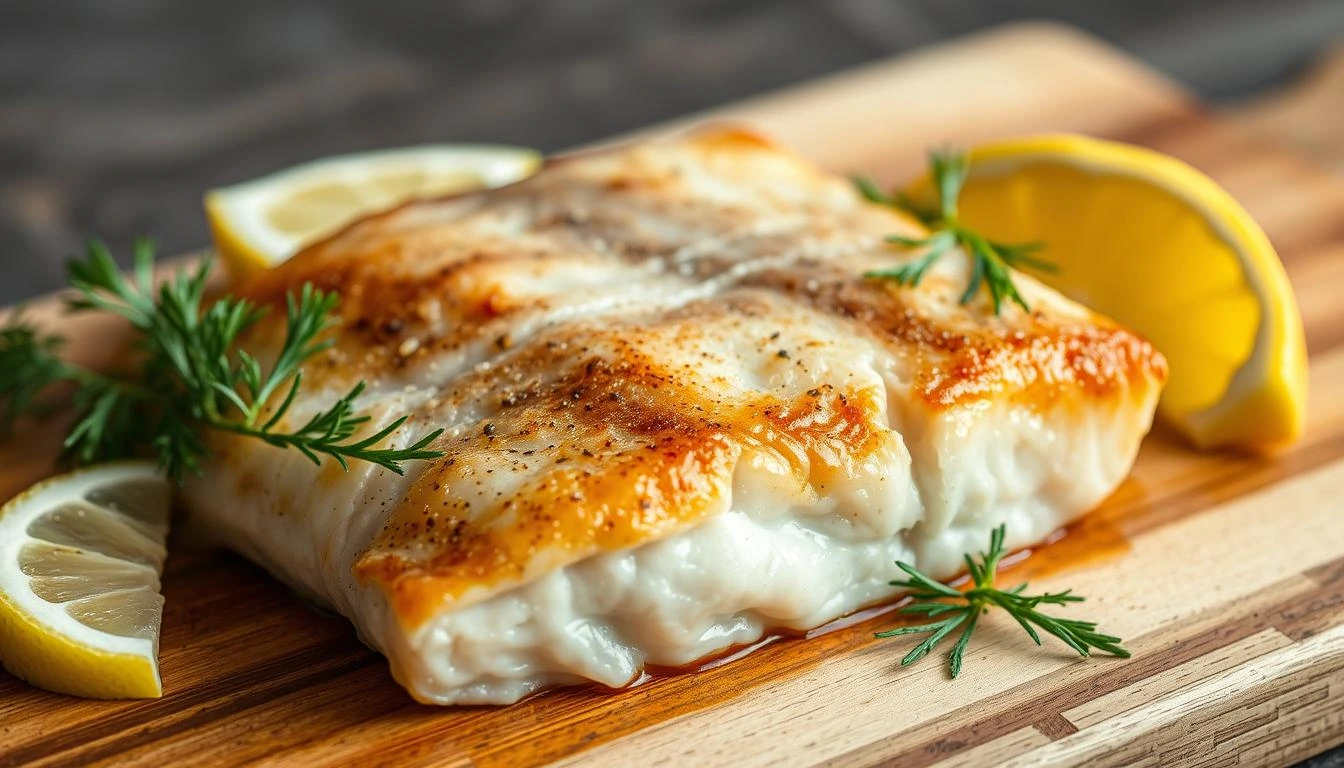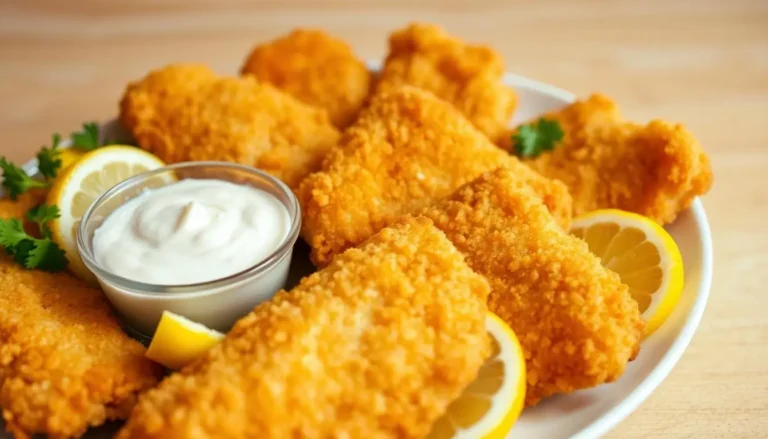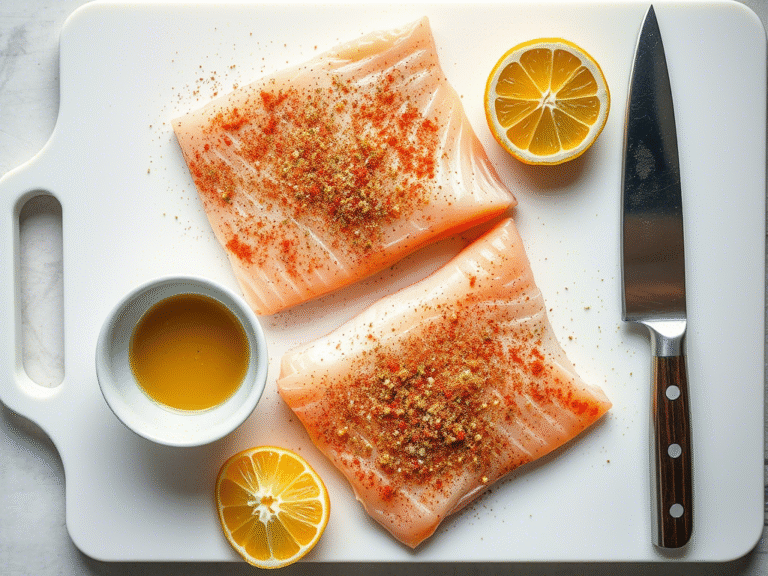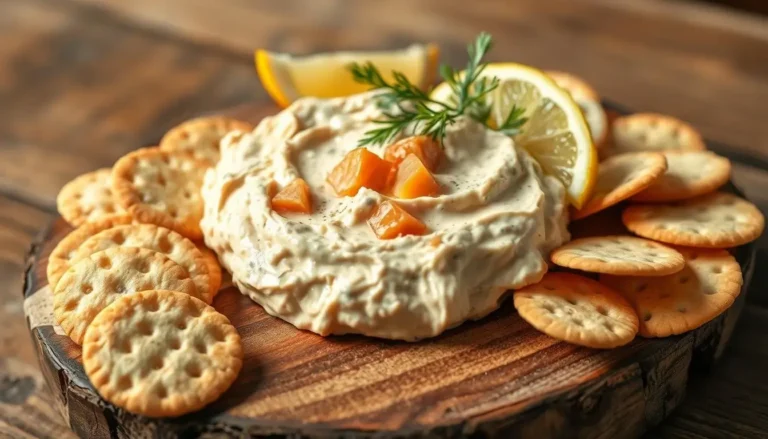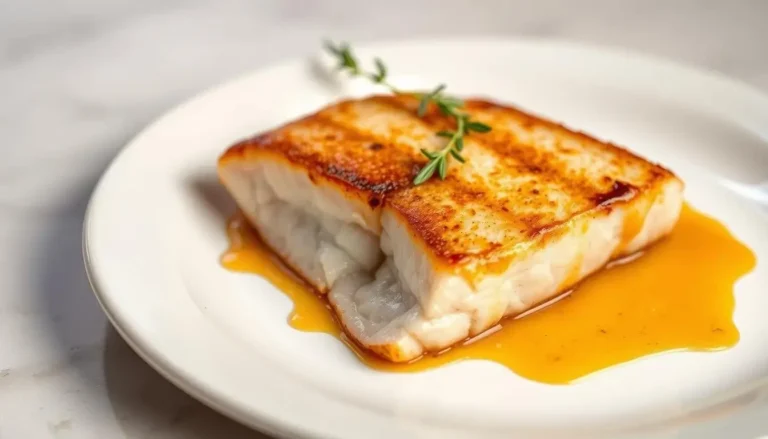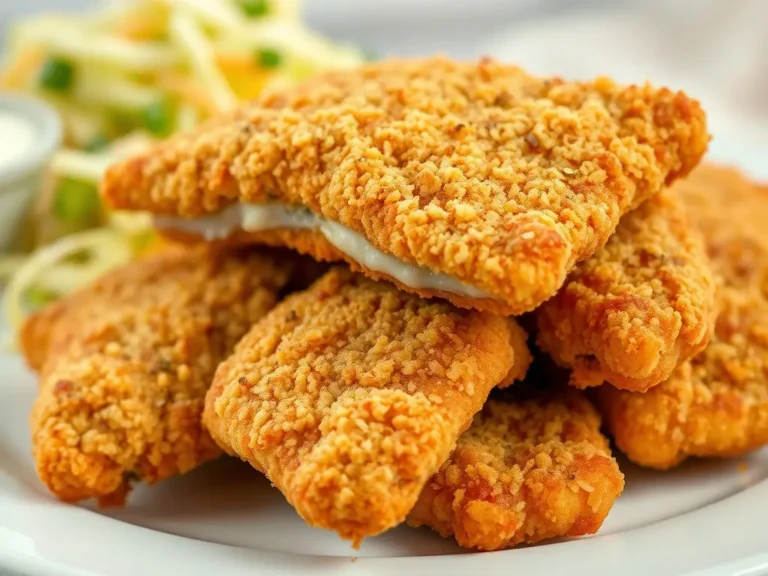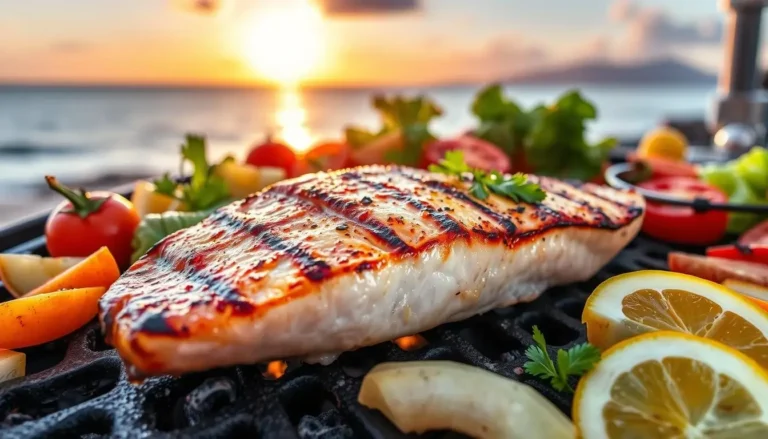How to Cook Pollock Fish for Beginners: Easy Methods and Tips
Table of Contents
How to Cook Pollock Fish: Easy Recipes & Tips for Beginners
Looking for a versatile seafood option that’s easy on your wallet? Pollock is a great choice. It features a gentle flavor and tender consistency, making it ideal for those new to cooking. Plus, it’s affordable and works well with many cooking methods.
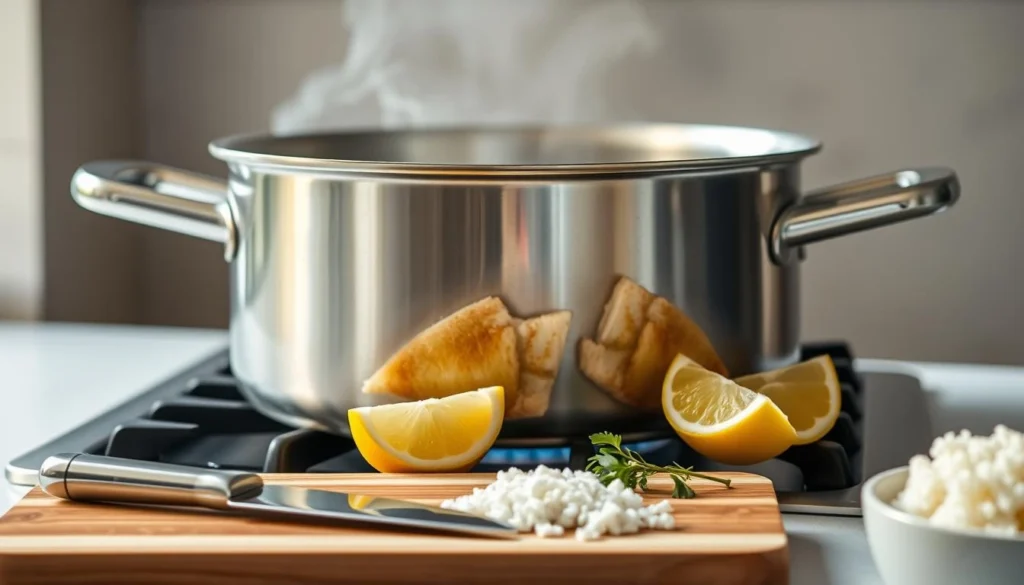
Want to make delicious meals for yourself or guests? Learning a few basic cooking methods can open up a world of possibilities. We’ll show you four easy ways to cook pollock, including air frying for extra crunch. You’ll be able to make dishes that taste like they came from a restaurant using just your kitchen tools.
Key Takeaways
- Pan-frying delivers golden crusts in under 10 minutes
- Baking preserves moisture for flaky results
- Grilling adds smoky depth with minimal cleanup
- Air fryers create crispy textures without excess oil
- Pollock pairs well with bold spices and citrus flavors
Ready to improve your cooking skills? These methods work with both fresh and frozen pollock fillets. This means you can whip up a tasty meal at the last minute. Let’s make pollock your go-to choice for quick weeknight dinners.
Understanding Pollock Fish
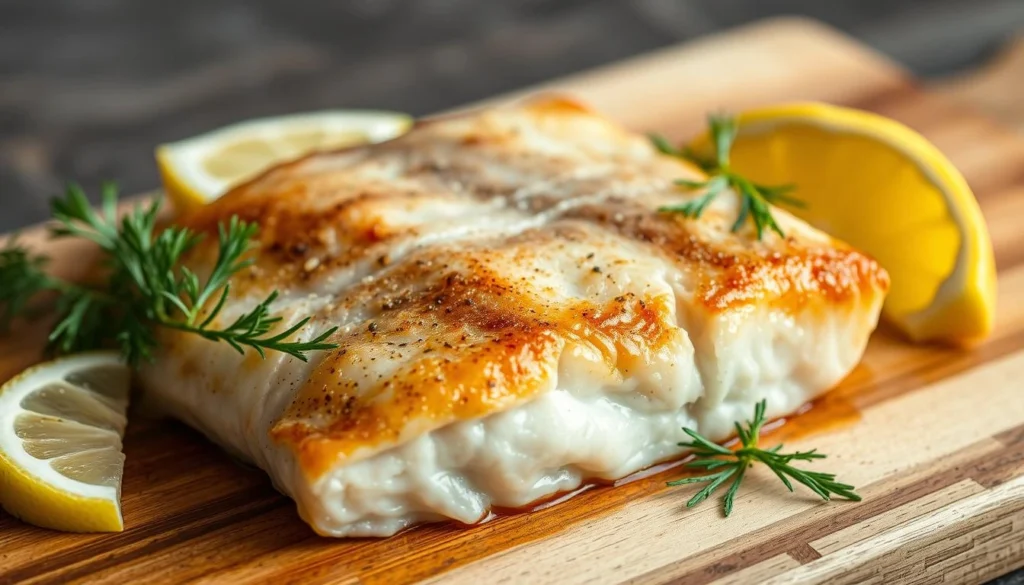
Pollock fish is a blank canvas for cooking. It has a mild taste and tender flesh. You can bake, grill, or pan-fry it easily. It’s a favorite in many U.S. kitchens.
What Makes Pollock a Great Choice
Mild flavor is Pollock’s key feature. It won’t overpower your dishes, making it great for beginners. Its flaky texture is perfect for tacos, soups, and casseroles.
Alaskan Pollock fillets are also affordable. They cost 30-40% less than cod or haddock, yet offer similar nutrition. This makes them ideal for meal prep or feeding a crowd.
Wild-Caught vs Farm-Raised Pollock
Most U.S. supermarkets sell wild-caught Alaskan Pollock. It’s harvested sustainably and tastes cleaner. Farm-raised options are less common but have a softer texture and milder flavor.
| Type | Taste | Sustainability |
| Wild-Caught | Clean, oceanic | Certified sustainable |
| Farm-Raised | Milder, earthy | Limited availability |
Nutritional Benefits
A 3-ounce serving has 20g of lean protein, like chicken breast, with just 90 calories. It’s also packed with omega-3 fatty acids (350mg per serving) for heart and brain health. Its low mercury levels make it safe for regular eating, even for pregnant women.
Combine it with vegetables high in vitamin C, such as bell peppers, to boost iron absorption. Now you’re ready to cook Pollock like a pro!
Preparing Your Pollock for Cooking
Learning how to prepare Pollock is key before you start cooking. Handling the fillets right keeps them tasty and tender. Here are three important steps for every home cook.
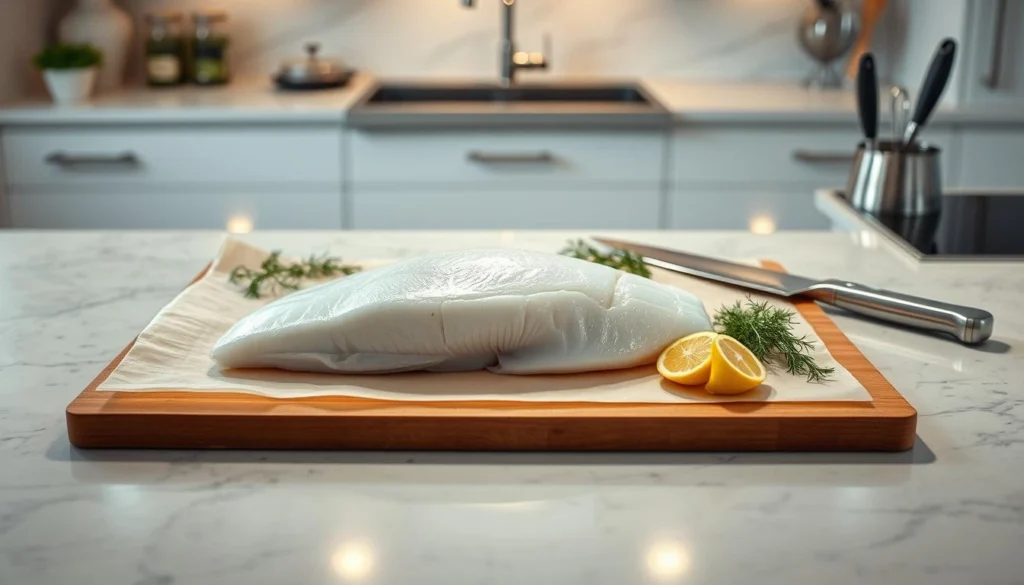
Thawing Frozen Fillets Properly
Defrosting slowly is crucial to avoid mushy fish. For the best results:
- Fridge method: Place the sealed fillets on a dish in the refrigerator for 12-24 hours
- Cold water bath: Immerse vacuum-sealed fish in chilled water, replacing the water every half hour
Don’t use the microwave, as it can cook unevenly and partially.
Patting Dry: The Secret to Perfect Texture
Getting rid of excess moisture is key for a crispy crust. Use paper towels to dry both sides of the fish. This helps both fresh and thawed fillets brown better and cook without splattering.
Basic Seasoning Combinations
Boost the flavor of Alaskan Pollock with these easy mixes:
- Lemon-Pepper Zing: 1 tsp lemon zest + ½ tsp black pepper + ¼ tsp salt
- Cajun Kick: 1 tsp of paprika + ½ tsp of garlic powder + ¼ tsp of cayenne pepper
- Herb Crust: 2 tbsp chopped parsley + 1 tsp thyme + ½ tsp lemon juice
Put seasonings on just before cooking to keep moisture in. For thicker coatings, press spices gently into the fish.
How to Cook Pollock Fish: Essential Methods
Pollock fish is great for four main cooking ways. It’s perfect for both fresh and frozen Alaskan fillets. These methods make sure your fish is always juicy.
Let’s look at each method. This way, you can pick the best one for your kitchen and schedule.
Mastering Pollock Cooking Techniques
Each method is best for different times. Pan-frying gives crispy edges for quick dinners. Baking is perfect for busy days because it’s easy.
Grilling adds a smoky taste for outdoor meals. Air frying is quick and healthier for when you’re in a rush.
| Method | Equipment | Best For | Time | Doneness Clues |
| Pan-Frying | Skillet, tongs | Quick meals | 8-10 mins | Golden crust, opaque flesh |
| Baking | Oven, baking sheet | Family dinners | 15-18 mins | Flakes easily with fork |
| Grilling | Grill, cedar planks | Summer cookouts | 10-12 mins | Grill marks, firm texture |
| Air Frying | Air fryer basket | Low-oil meals | 9-11 mins | Crispy surface, moist interior |
For Alaskan pollock fillets, pat them dry first. This helps with searing or crisping. Keep frozen fillets in their packaging while thawing in the fridge overnight.
Test doneness by inserting a fork at a 45° angle. The fish should separate cleanly when ready.
Pro tip: For thicker cuts, baking and grilling are the most effective methods. Thin fillets are better for quick-cook methods like pan-frying. Always let cooked pollock rest 2-3 minutes before serving. This helps juices redistribute for maximum flavor.
Pan-Frying Pollock to Golden Perfection
Pan-frying turns pollock into a crispy, golden treat. It’s comparable to the delightful dishes served in fine dining establishments.This method keeps the fish moist and adds a nice crunch. It’s perfect for quick dinners or when you want to impress.
There are three key steps: getting the coating right, managing the heat, and flipping perfectly.
1. Creating a Crispy Coating
Begin with a double-dredge technique for the best texture. First, apply a layer of seasoned flour to the fish, followed by an egg wash, and then coat it with panko breadcrumbs. Add crushed cornflakes to the panko for extra crunch. Press the coating firmly to prevent it from flaking.
2. Oil Temperature Control
Choose oils with high smoke points to avoid burnt tastes. Canola and avocado oil are great, while olive oil works for medium heat. Warm about 1/8″ of oil until it glistens (around 350°F). Test it with a breadcrumb – it should sizzle right away without smoking.
| Oil Type | Smoke Point | Best For |
| Canola | 400°F | High-heat frying |
| Avocado | 520°F | Extra crispy results |
| Olive Oil | 325-375°F | Medium-heat cooking |
3. Flipping Without Falling Apart
Wait for the golden edge signal – when the edges start to brown (about 3-4 minutes). Carefully slide a thin metal spatula beneath the fish before you flip it. Flip it in one smooth motion, tilting the pan to reduce splatter. Cook the second side for 2-3 minutes until it reaches 145°F.
Let the fillets rest on a wire rack instead of paper towels to keep them crispy. Serve them right away with lemon wedges or tartar sauce. This makes your restaurant-worthy pollock recipe stay crispy until the last bite.
Baking Pollock in the Oven
Oven-baked pollock is easy to make and keeps the fish moist. It’s perfect for beginners who want to focus on flavors. Here are three steps to make a delicious baked pollock dinner.
1. Preparing a Foil Packet
Start by making a steam-friendly foil or parchment paper packet. Use a 12″x16″ sheet, oil the center lightly, and place seasoned pollock fillets in the middle. Add lemon slices and fresh herbs like dill or thyme on top. Seal the edges tightly to keep the heat in and the fish juicy.
2. Timing for Flaky Results
For optimal texture, bake the pollock at 400°F. Modify the cooking duration according to the thickness of the fish:
| Fillet Thickness | Temperature | Time |
| 1/2 inch | 375°F | 12-14 mins |
| 3/4 inch | 400°F | 15-17 mins |
| 1 inch | 425°F | 18-20 mins |
To determine if the fish is fully cooked, use a fork to test it. It should separate easily into flakes while retaining moisture.
3. Adding Vegetables for Complete Meals
Make your baked pollock dinner complete by adding quick-roasting veggies. Asparagus, zucchini, or cherry tomatoes cook well with the fish at 400°F. Coat the vegetables with olive oil and spices, then place them around the foil packet. Pro tip: Add Brussels sprouts 5 minutes before the other veggies for even cooking.
Grilling Pollock Fillets Outdoors
Grilling pollock fillets brings out their natural sweetness and adds a smoky depth. This makes simple recipes into crowd-pleasers. For the best results, keep your grill at 400-450°F. This temperature range prevents drying and creates crisp edges.
1. Preventing Stickage on the Grill
Oiling is non-negotiable when grilling delicate pollock. Brush both the fish and grates with oils like avocado or grapeseed. For extra insurance, use a perforated grill mat or fish basket.
Wait until grill marks form before flipping. Premature turning can cause breakage.
2. Using Cedar Planks Effectively
Soak untreated cedar planks for 1-2 hours before grilling. This creates aromatic steam. Place seasoned fillets on the damp wood and close the lid.
This method infuses subtle earthiness while keeping fish moist. Compare wood flavors:
| Wood Type | Flavor Profile | Best For |
| Cedar | Bold, woodsy | Rich sauces |
| Maple | Sweet, mild | Citrus marinades |
3. Achieving Smoky Flavors
Enhance your grilled pollock recipes with wood chips. Soak hickory and applewood chunks for 30 minutes. Then scatter them over charcoal or in a smoker box.
Place the fillets on the cooler side of the grill for indirect heat absorption. The dual smoke sources create complex flavors without overpowering the fish.
Pair these techniques with zesty marinades or herb rubs from your favorite pollock recipes. Grill time rarely exceeds 4-6 minutes per side for 1-inch thick fillets. Use a meat thermometer – 145°F signals perfectly cooked, flaky fish.
Air Frying Pollock for Quick Meals
Air fryers make frozen pollock fillets crispy and restaurant-quality in under 15 minutes. This is great for busy weeknights. Begin by setting your air fryer to a temperature of 380°F. Cook time is 10-12 minutes, depending on your basket size.
This method keeps moisture in and makes the outside golden. It’s perfect for how to cook pollock fish with little cleanup.
1. Spray vs Brush Oil Application
Even oil distribution is key for browning without sogginess. Here’s how to decide between spray and brush oil:
| Feature | Spray Oil | Brush Oil |
| Coverage | Thin, even layer | Risk of pooling |
| Convenience | Faster application | Requires cleanup |
| Oil Quantity | Uses 40% less | Harder to control |
For the best results, lightly spritz both sides of seasoned fillets with avocado oil spray. This helps achieve the perfect crunch.
2. Single Layer Cooking
Don’t overcrowd your air fryer basket. It should be like parking spots, not a busy highway. Place fillets in one layer, leaving ½” space between them.
If needed, cook in batches. Keep the cooked pieces warm in an oven set to 170°F.
3. Reheating Leftovers
To reheat leftover pollock, place it in the air fryer at 350°F for 3-4 minutes. Use a wire rack insert to prevent sogginess from steam. For extra crispness, lightly respray before reheating.
5 Simple Pollock Recipes to Try
Looking for new ways to enjoy pollock? These five beginner-friendly recipes deliver big flavors with minimal effort. Each dish uses techniques covered earlier and common ingredients you likely already have. Let’s dive into three standout options, plus a handy comparison table for all five ideas.
| Recipe | Cooking Method | Key Ingredients | Ready In |
| Lemon Garlic Butter Pollock | Pan-Frying (Section 5) | Butter, lemon, garlic | 15 mins |
| Blackened Pollock Tacos | Grilling (Section 7) | Chili powder, tortillas | 20 mins |
| Asian-Style Steamed Fillets | Baking Packet (Section 6) | Soy sauce, ginger | 25 mins |
| Crispy Baked Pollock | Oven Baking | Panko, Parmesan | 18 mins |
| Air Fryer Bites | Air Frying (Section 8) | Breadcrumbs, paprika | 12 mins |
Lemon Garlic Butter Pollock
Ingredients:
- 4 pollock fillets
- 3 tbsp butter
- 2 garlic cloves (minced)
- 1 lemon (zested + juiced)
Follow the pan-frying steps from Section 5. Melt butter in the pan, add garlic until fragrant, then drizzle over cooked fish. Finish with lemon zest for brightness.
Blackened Pollock Tacos
Spice Mix:
- 1 tbsp smoked paprika
- 1 tsp cayenne pepper
- 1 tsp garlic powder
Coat fillets with spices and grill using Section 7 techniques. Wrap in heated tortillas alongside a crisp cabbage slaw and zesty lime crema.
Asian-Style Steamed Fillets
Sauce:
- 2 tbsp soy sauce
- 1 tbsp sesame oil
- 1 tsp grated ginger
Create foil packets as shown in Section 6. Pour sauce over fish, add sliced scallions, and steam until flaky. Serve over jasmine rice.
Serving Suggestions and Pairings
Make your pollock dishes stand out with great pairings. These combinations will make your recipes for pollock unforgettable, whether it’s for a dinner party or a quick weeknight meal.
Best Side Dishes for Pollock
Match your fish with sides that are in season. During spring, a refreshing citrus slaw or garlic-infused asparagus is ideal. For fall, roasted carrots and parsnips bring a warm, earthy taste. Here are some quick ideas:
| Season | Side Dish | Prep Time |
| Spring | Lemon-herb quinoa | 15 mins |
| Summer | Grilled zucchini | 10 mins |
| Fall | Maple-glazed squash | 25 mins |
| Winter | Creamy polenta | 20 mins |
Wine and Beer Pairings
For wine, choose crisp whites like Sauvignon Blanc. They complement pollock’s light texture. Beer fans might prefer light pilsners or citrusy IPAs. Stay away from heavy reds, as they can overwhelm the fish.
Presentation Tips for Guests
Place fillets diagonally on rectangular plates. Add a pop of color with lemon wedges and fresh dill. Serve sides in small bowls to keep flavors separate. A drizzle of olive oil or a sprinkle of paprika can make it look even better.
Avoiding Common Pollock Cooking Mistakes
Mastering Alaskan pollock fillets is more than just following recipes. It’s about avoiding common mistakes that even experienced cooks make. Let’s look at three key areas where mistakes often happen and how to fix them.
Overcooking Prevention
Pollock’s delicate texture becomes rubbery if cooked too long. Check for doneness early by gently pressing a fork into the thickest part. If it flakes easily and looks opaque, it’s ready.
Start testing baked or grilled fillets at the 8-minute mark. Utilize a meat thermometer for accuracy—145°F (63°C) is the perfect cooking temperature. Remove the fish from heat at 140°F (60°C), as residual heat will finish cooking it.
Seasoning Pitfalls
Salt-heavy rubs can make fillets dry. Season lightly before cooking and add a finishing sprinkle of flaky salt. Complement robust spices such as paprika or cayenne with tart components like lemon juice or vinegar.
Avoid drowning the fish in sauces. For garlic butter or herb crusts, apply them during the last 2 minutes of cooking to prevent burning.
Storage Errors
Never leave raw pollock at room temperature for more than 2 hours. Store uncooked fillets in airtight containers or sealed bags for up to 3 days in the fridge. For longer storage, freeze them in portion-sized packs wrapped in plastic and foil.
Cooked pollock stays fresh for 4 days refrigerated. Reheat gently in a 300°F (149°C) oven with a splash of broth to maintain moisture.
Conclusion
Learning to cook pollock fish is a gateway to quick and gourmet meals. You’ve found various methods, like pan-frying for a crispy crust or grilling for a smoky taste. Each way keeps the fish’s mild flavor while letting your creativity with spices and marinades shine.
Pollock is perfect for any meal, whether it’s a busy weeknight or a special dinner. Try lemon-butter sauces for a classic taste or go bold with Cajun rubs and mango salsas. Its high protein and omega-3 fatty acids make every meal nutritious, whether baked with asparagus or air-fried for fish tacos.
Keep your cooking exciting by trying different methods from this guide. Mix blackened seasoning with grilled fillets or add miso glaze to oven-baked portions. Share your best pollock dishes on social media using #PollockPerfection – your unique twist might inspire others.
With thawing techniques and temperature control mastered, you’re set to make pollock a regular in your kitchen. What new flavor combination will you explore first ? Get your apron ready, heat the skillet, and start your kitchen adventures.
FAQ
What’s the easiest way to cook pollock for beginners?
Pan-frying or baking pollock are great for beginners. Pan-frying gives a crispy crust with simple coatings. Baking in foil packets at 375°F–425°F keeps it moist and flaky. Both methods need little equipment and basic seasonings.
How do I prevent pollock from sticking to the grill?
Oil the grill grates well with oils like canola or avocado. Preheat to 400–450°F. Use cedar planks or a fish basket for extra protection. Patting fillets dry before grilling also helps.
Can I cook frozen pollock fillets without thawing?
While possible, thawing is better for even cooking. Quick thawing in cold water for 30 minutes works well. If cooking from frozen, add 5–7 minutes to baking time. Use a meat thermometer to check for 145°F internal temperature.
What oil is best for pan-frying pollock?
Choose oils like canola, grapeseed, or refined avocado oil. Avoid extra-virgin olive oil for high-heat frying. It can make flavors bitter. Heat oil to 350–375°F for golden, crisp fillets.
How long does it take to bake pollock in the oven?
At 400°F, 1-inch-thick filts bake in 12–15 minutes. Use foil packets for moisture or parchment paper for crisp edges. The fish is done when it flakes easily and reaches 145°F internally.
What are healthy seasoning options for pollock?
Try lemon-pepper (1 tsp lemon zest + ½ tsp pepper), Cajun spice (1 tbsp paprika + ¼ tsp cayenne), or herb crusts (2 tbsp parsley + 1 tsp thyme). Avoid oversalting. Pollock’s mild flavor is best with light, bright seasonings.
Is pollock a good source of omega-3s?
Yes! A 3-oz cooked pollock fillet has 0.5g of omega-3s. It’s also lean, with 20g protein and 100 calories per serving. This makes it great for heart health.
Can I air-fry Alaskan pollock fillets?
Absolutely. Air fry at 380°F for 10–12 minutes in a single layer. Lightly spray with olive oil for crispness. Reheat leftovers at 350°F for 3–4 minutes to restore texture.
What sides pair well with pollock recipes?
Seasonal veggies like asparagus (spring) or roasted squash (fall) go well with pollock. For grains, try quinoa or jasmine rice. A crisp Sauvignon Blanc or light pilsner complements its mild flavor.
How do I store cooked pollock safely?
Refrigerate in an airtight container for up to 3–4 days. For longer storage, freeze for 2–3 months. Avoid leaving cooked fish at room temperature for over 2 hours to prevent bacterial growth.
Pairitamin-C-rich veggies likeenhanceutplatedSoakolchanging it every 30 minutes

